#Louise-Élisabeth d'Orléans
Explore tagged Tumblr posts
Text
Today's random fanfiction is from the L'Échange des princesses | The Royal Exchange (2017) fandom. Rien à voir. by AngelicaR2
Chapters: 1/1 Words: 336 Fandom: 18th Century CE RPF, L’Échange des princesses | The Royal Exchange (2017) Rating: General Audiences Warnings: No Archive Warnings Apply Relationships: Mme de Ventadour & Marie Anne Victoire d'Espagne Characters: Mme de Ventadour, Marie Anne Victoire d'Espagne, Louis XV de France, Louise-Élisabeth d'Orléans Additional Tags: Spain, Versailles - Freeform, 18th Century, Drabble, Hope, Travel, differences Language: Français Summary: [L’Échange des princesses] : Drabble. “Marie Anne Victoire n'a rien à voir avec Louise-Elizabeth, et Mme de Ventadour espère sincèrement que cela ne va pas changer.”
#fic rec#random fanfiction#random#random recs#fanfic#ao3#fanfiction recommendation#fanfic rec#fanfiction#ao3 fanfic#18th Century CE RPF#L’Échange des princesses | The Royal Exchange (2017)#Mme de Ventadour & Marie Anne Victoire d'Espagne#Mme de Ventadour#Marie Anne Victoire d'Espagne#Louis XV de France#Louise-Élisabeth d'Orléans#Spain#Versailles - Freeform#18th Century#Drabble#Hope#Travel#differences
2 notes
·
View notes
Text

12 notes
·
View notes
Text
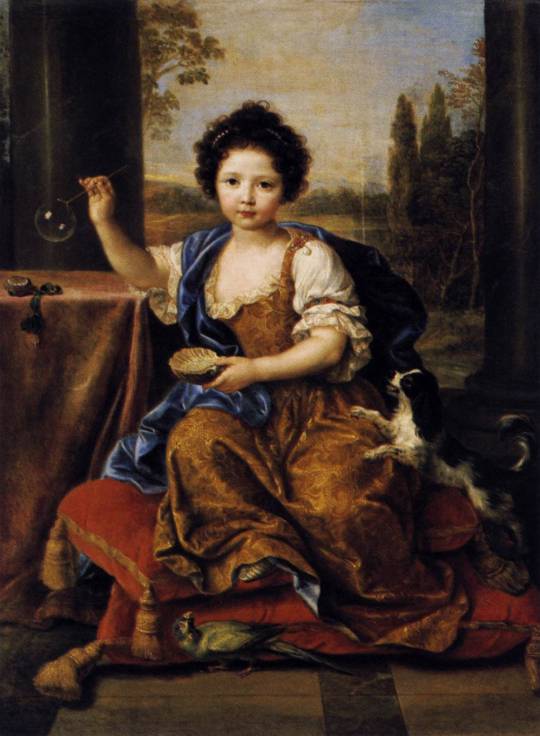
"Louise-Marie de Bourbon, dite Mademoiselle de Tours; La fillette aux bulles de savon"
By Pierre Mignard
Oil Painting, 1681.
Château de Versailles.



PORTRAIT SUBJECT
La fillette aux bulles de savon, or the commonly found English title, Girl Blowing Soap Bubbles, is a portrait of innocence during the Franco-Dutch War.
The child shown is Louise-Marie de Bourbon, the daughter of the Sun King, Louis XIV, and his Maîtresse-en-titre, Françoise-Athénaïs de Rochechouart (Madame de Montespan). I'm sorry, I don't know why they popped off with the names like that when they're planning to reuse Marie and Louis fifty times over ptdr. Louise-Marie, affectionately known as Toutou, was an illegitimate birth (1674), later legitimized by her father when she was around two years old. She held the title of Mademoiselle de Tours from then until her untimely death in 1681.
According to sources, Mignard's painting of the six-year-old girl was finished posthumously. But, her innocence is held delicately, frozen in time on canvas.

THEMES OF CHILDHOOD INNOCENCE (TL;DR: YAPANESE)
Mignard's choice to paint Louise-Marie as an actual child was uncommon for the time (even centuries later, believe it or not; maybe not so good examples, but for argument-sake: Louis XV by Hyacinthe Rigaud, Mariana Victoria of Spain by Nicolas de Largillierre, Phillip II, Duke of Orléans, Reagent of France by Largillierre, and Élisabeth Charlotte d'Orléans, "Mademoiselle de Chartres" by Largillierre -- apologies for throwing you strays, man, I'm trying to finish writing this and your children portraits were on the same website next to each other x), as young royalty are painted either as babies (unbreeched/baptize gown) or as tiny adults (fixed in uncomfortable poses and wearing clothes a monarch would), no in between. Here, Louise-Marie is playing with bubbles, her dog jumping towards it, and she looks carefree, still with chubby cheeks of rose. It doesn't help much that children were seen as heirs to the family fortune, especially during a time when parents had multiple kids due to illness (premature death) and bringing in income (need I explain more... *cough cough* coal mines... a bit anachronistic, sorry breaker boys, some other time we'll discuss y'all).
A painting such as this one, showing a realistic human experience from a royal status and that of a child BEING a child, innocence still intact, is quite important, even in today's form. We take childhood for granted, and kids are forced to grow up despite having more rights now than before. It can be a portrait to remind us that innocence is vital (a lack of childhood is detrimental as the experience is needed in order to mature mentally and emotionally when entering the teen and adult stages of life), but also that we as humans weren't so different from back then (sure, you can claim we bathe more than they do despite your husband still not washing his ass, but my heavens, did the thought 'wait, they had bubbles back then' ever occur to you?).
Genuinely, I was going to pull a La Muse Verte (the post where I briefly explained the history of absinthe) and go into the history of bubbles... because you gotta admit, that'd be fun for the both of us. However, delving into the background and theme of this painting became more heartbreaking for me. The bubble idea isn't gone, but it'll be postponed as a full history lesson post (and, yes, Mignard's painting of the immortalized Toutou will be recycled).

FURTHER READING (EXTRA SYMBOLISTIC DETAIL)
Plenty more symbolism is present, but I highly recommend you all check out L'Art en Tête's in-depth article on Mignard's beautiful portrait. I did regurgitate some of the author's points in this because I thought they were brilliant, and you can tell they have an art-history degree, so I'm begging you to go over there for more detail if interested!

#art#painting#oil painting#artwork#history#french#french art#17th century#1600s#1600s art#late 1600s#17th century art#baroque#Pierre Mignard#Château de Versailles#versailles#Royalty#French history#louis xiv#sun king#symbolism#louise-marie#mademoiselle#art history#house of bourbon#early modern period#kingdom of france
10 notes
·
View notes
Text

Marie-Louise-Élisabeth d'Orléans (1695-1719), Duchesse de Berry.
#royaume de france#maison de bourbon#maison d'orléans#bourbon orléans#bourbon orleans#duchesse de berry#duché de berry#berry#full length portrait#princesse du sang#Joufflotte#Vénus du Luxembourg#mademoiselle#marie louise elisabeth d'orleans#full-length portrait#engraving#engravings
3 notes
·
View notes
Text
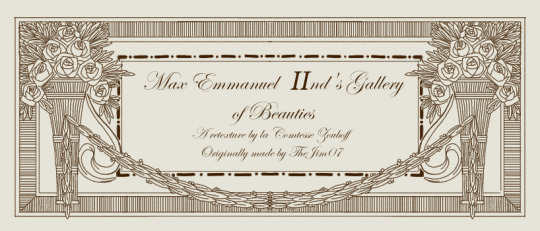

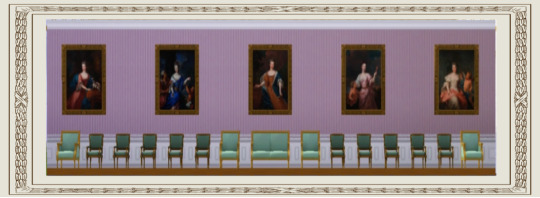
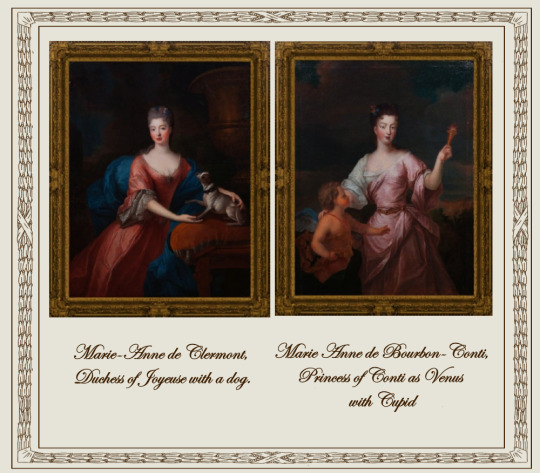


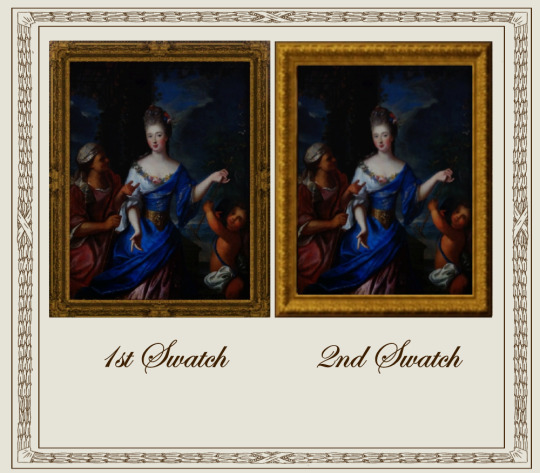
Max Emmanuel II's Gallery of Beauties
A retexture by La Comtesse Zouboff — Original Mesh by @thejim07
Elector Max Emanuel’s Great Gallery of Beauties shows five portraits of ladies at the court of Louis XIV, painted by Pierre Gobert around 1715, brought from the Palace of Versailles, these paintings displayed ladies and princesses of the french court at the dawn of Louis XIV's life.
This set contains 5 portraits, with the original frame swatches, fully recolourable. The portraits are of:
Marie-Anne de Clermont, Duchess of Joyeuse with a dog.
Marie Anne de Bourbon-Conti, Princess of Conti as Venus with Cupid
Marie Louise Élisabeth d'Orléans, Duchess of Berry
Louise Françoise de Crussol d'Úzès, Marquise of Gondrin as venus with cupid
Marie-Anne de Bourbon, Princess of Conti as Pomona, with Vertumnus at her side (replacing the portrait of Madame de Charolois, as no decent pictures of the portrait exists)
Found under decor > paintings for 2.090§
Retextured from the "Portrait of the Duchess of Angoulême" found here
-------------------------------------------------------
CC shown here:
Wall paneling and floor by @thejim07
Loveseat, armchairs and chairs by @aroundthesims
Doors by @joojconverts

Drive
(Sims3Pack | Package)
(Useful tags below)
@joojconverts @ts3history @ts3historicalccfinds @deniisu-sims @katsujiiccfinds
-------------------------------------------------------
#the sims 3#ts3#sims 3 cc#s3cc#sims 3#sims 3 download#portrait#sims 3 decor#sims 3 art#nymphenburg#louis xiv#palace of versailles#pierre gobert#wall decor
34 notes
·
View notes
Text

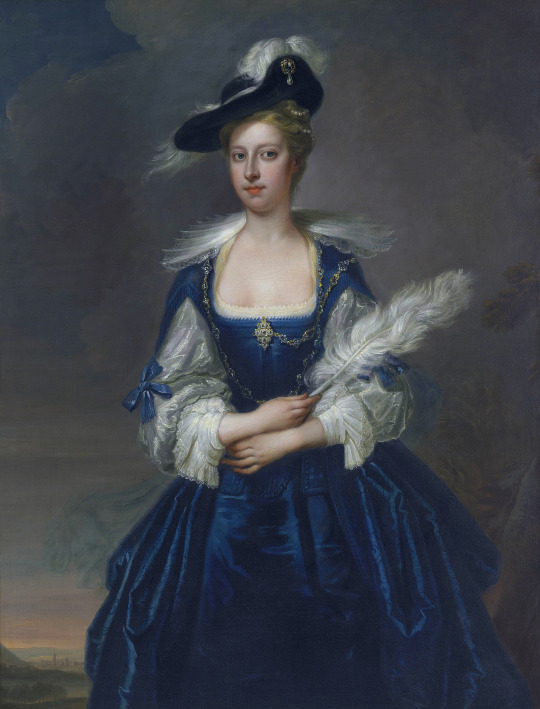
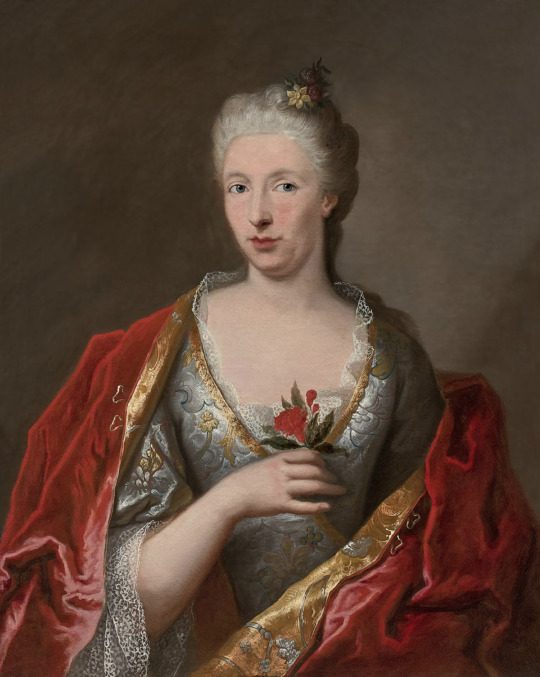
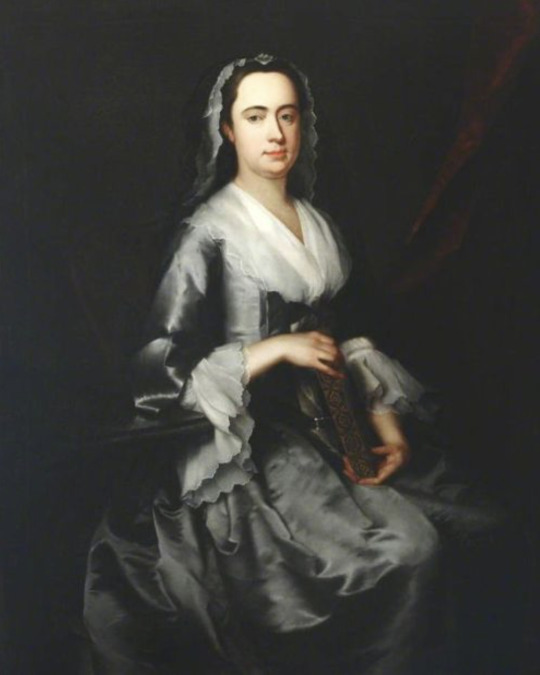
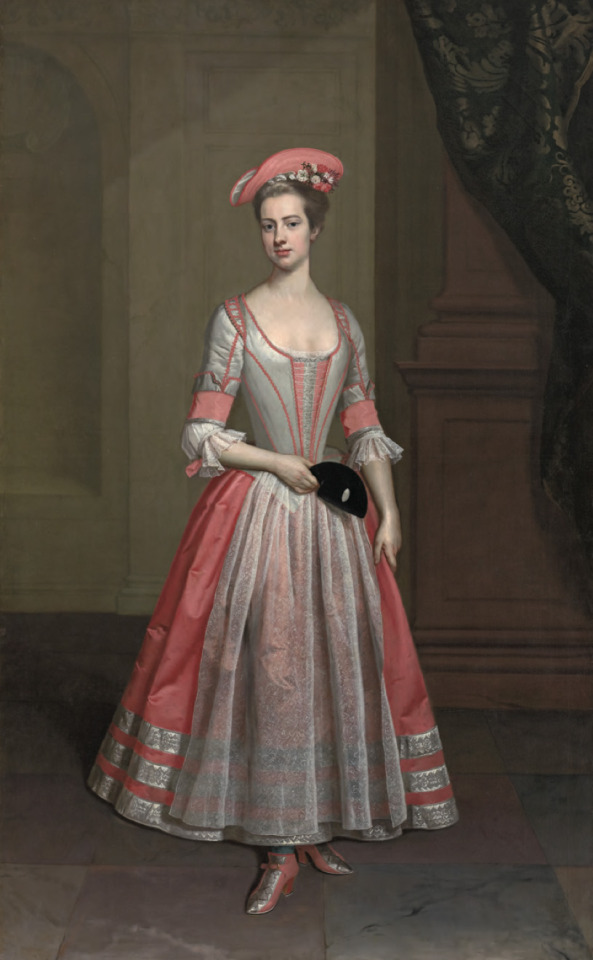
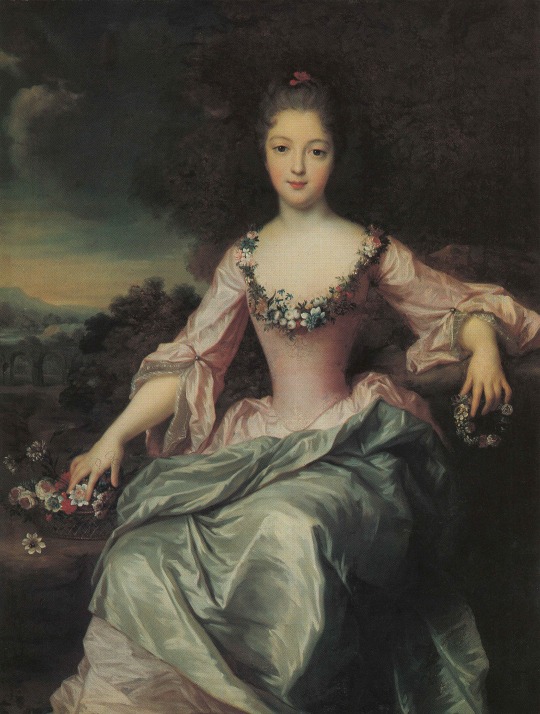

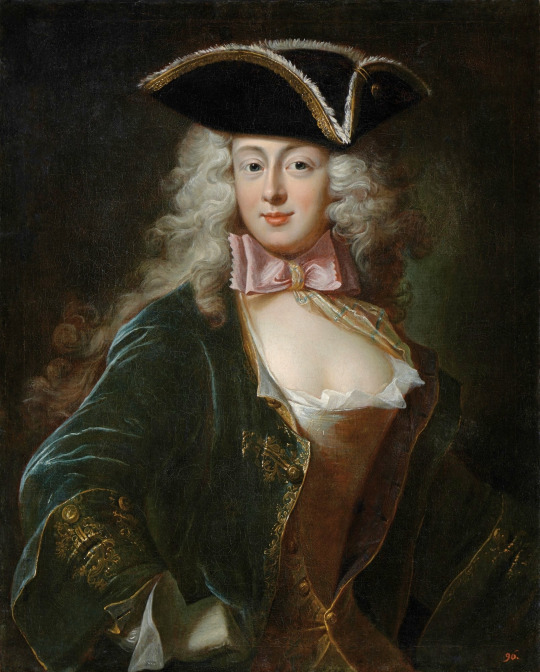

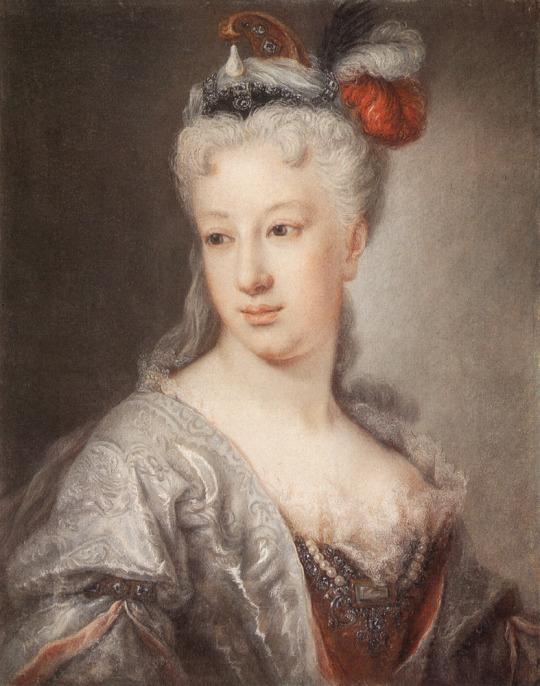

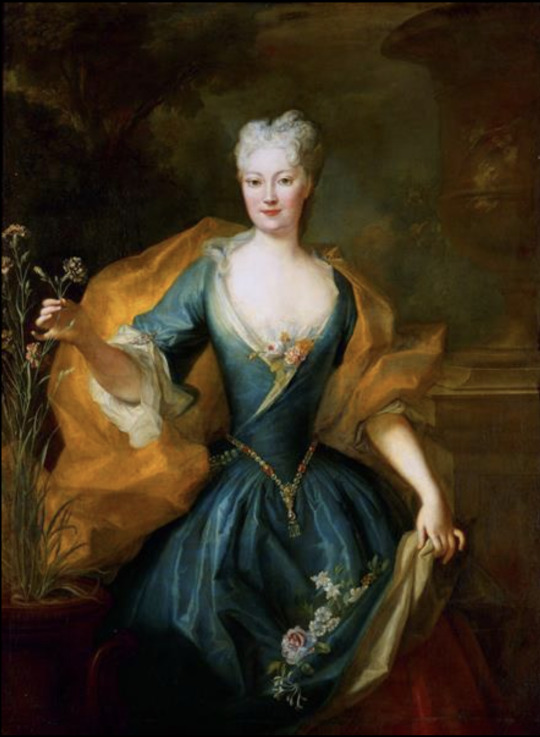

1720s dress -
Top left 1720 (probably) Princess Rakoczi by Nicolas de Largillierre (National Gallery - London, UK); From paintings-art-picture.com/paintings/archives/534/largilliere-nicolas-de-princess-rakoczi; removed spots throughout image and print in lower rt corner 152.0X2000.
Top right ca. 1720 (based on date of marriage) Elizabeth Dunch, later Lady Oxenden, by Thomas Hudson (auctioned by Christie’s). From their Web site; fixed obvious spots w Pshop 2449X3215.
Second row left ca. 1720 Dame dite madame Élisabeth Parisot by entourage of Jean-Baptiste Oudry (on auction by Tajan). From invaluable.com-auction-lot-ecole-francaise-vers-1720-entourage-de-jean-bapti-42-c-20e48bc868; fixed creases w Pshop 2990X3747.
Second row right ca. 1720 Mrs or Miss Mary Miller by the circle of Jonathan Richardson the elder (location ?). From titam.tumblr.com 1228X1536.
Third row ca. 1720 Henrietta Hobart, The Hon. Mrs Howard, later Countess of Suffolk, in a masquerade dress attributed to Thomas Gibson (Blickling Hall - Blickling, Norfolk, UK). From the National Trust's Blickling Hall Illustrated Picture List 816X1321.
Fourth row 1720 Marie Anne de Bourbon Condé by Gustaf Lundberg (auctioned by Nordén Auktioner). Probably from their Web site 3871X5117.
Fifth row 1721 Louise Anne de Bourbon, Mademoiselle de Charolais by Charles Antoine Coypel (location ?). From jeannedepompadour.blogspot.com/2012/03 820X1000.
Sixth rów left 1722 (before) Emerencjanna Pociej née Warszycka by Ádám Mányoki (Pałac Łazienkowski - Warszawa, Poland). From Wikimedia; too many flaws to fix 1608X2000.
Sixth row right 1722 Élisabeth-Charlotte d'Orléans, duchesse de Lorraine, avec son second fils François-Étienne par Alexis Simon Belle (location ?) From www.altesses.eu/princes290.php 823X1188.
Seventh row 1722 Marchesa Maria Guicciardini, née Rinuccini by Giovanna Fratellini (Galleria degli Uffizi - Firenze, Toscana, Italy). From www.pastellists.com; fixed left half of upper edge with Photoshop 787X1000.
Eighth row left 1723 Liselotte von der Pfalz by Hyacinthe Rigaud (auctioned by Tajan). Posted to Foro Dinastias by Minnie on 7 February 2010; removed flaws in background with Photoshop 614X1024.
Eighth row right 1724 Countess Karoline Friederike Lubomirska by Louis de Silvestre (private collection). From the-athenaeum.org 1768X2414.
Ninth row 1724 The Garter by Jean-François de Troy (location ?). From tumblr.com/catherinedefrance fixed obvious spots w Pshop 662X800.
#Princess Rakoczi#sucrcote#V waistline#Nicolas de Largillierre#1720s fashion#Rococo fashion#Louis XV fashion#Georgian fashion#Elizabeth Dunch#Thomas Hudson#ruff#Élisabeth Parisot#Jean-Baptiste Oudry#cross over bodice#Mary Miller#Jonathan Richardson the Elder#fichu#Henrietta Hobart#Thomas Gibson#apron#Marie Anne de Bourbon Condé#Gustaf Lundberg#Basque neckline#notched sleeves#Louise Anne de Bourbon#Charles Antoine Coypel#cap#fan#lace enggageantes#Emerencjanna Pociej
20 notes
·
View notes
Text
Portrait of an unknown woman in a costume ball gown, supposedly painted circa 1690 by Pierre Gobert.
I've seen conflicting sources claiming she is Marie Louise Élisabeth d'Orléans, Duchesse de Berry, and other sources claiming she is Louise Françoise de Bourbon, Mademoiselle de Nantes (1673-1743).
Supposedly this portrait is currently housed in the Musée Carnavalet in Paris, France.

94 notes
·
View notes
Photo
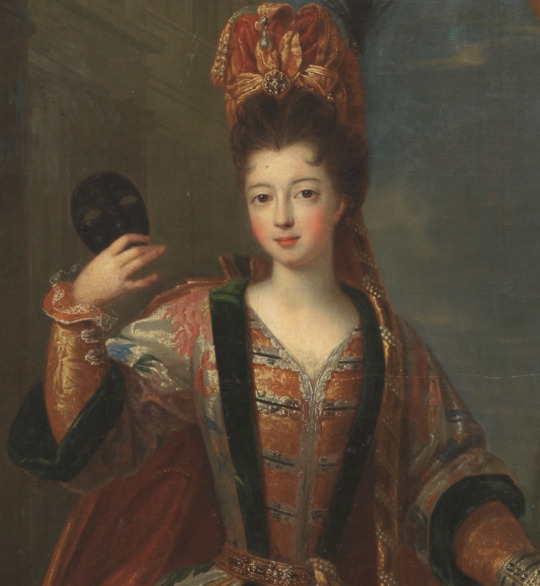
Pierre Gobert (French, 1662-1744) Marie Louise Élisabeth d'Orléans, Duchess of Berry, Detail, 1714
#Pierre Gobert#french#france#Marie Louise Élisabeth d'Orléans#duchess#art#european history#world history#art history#european#brunette#female portrait#dark eyes#Aristocracy#caucasian#aristocrat
20 notes
·
View notes
Text
"I am at present in undeserved disgrace."
As the examples of, among others, Marie de Medici, the duchesse de Longueville and the Grande Mademoiselle had demonstrated, the king's relationships with his closest female relatives was potentially as troublesome as that with any prince. After 1661, Louis XIV's principal concern was to uphold his own authority and to prevent the almost inevitable household disputes from threatening the tranquillity of his court. With so many men on active military service, Versailles during the later years of the reign was very much a feminine sphere, and disgrace was a no less constant preoccupation for aristocratic women who were determined to preserve their own personal and dynastic interests. Madame, duchesse d'Orléans, frequently returned to the theme. As a woman of trenchant and forthright views, she had struggled to remain in the king's good graces. In January 1691, she noted with pleasure that the king had paid some of her gambling debts, which she interpreted as a sign "that I am not so deeply in disgrace this year at last." Her good fortune proved short-lived, and many of her problems stemmed from her unguarded correspondence and her almost legendary hostility to the marquise de Maintenon. By September 1696, she could write venomously that:
"I am at present in undeserved disgrace. Whenever I come in the king's apartment the dirty old slut [Maintenon] withdraws and when I beg her to remain, she makes no reply but goes out with a sneer on her face. I am being treated in a very rude fashion. Every day I am forced to wait half-an-hour at the king's door before I am allowed to enter, and sometimes I am even sent away, although at the same time all the king's bastards and even Monsieur himself are in the room."
Some of her discomfiture on this and other occasions may have arisen from impatience with the dictates of protocol, but even if that was the case her sensitivity to every personal or ceremonial slight was typical of court society as a whole.
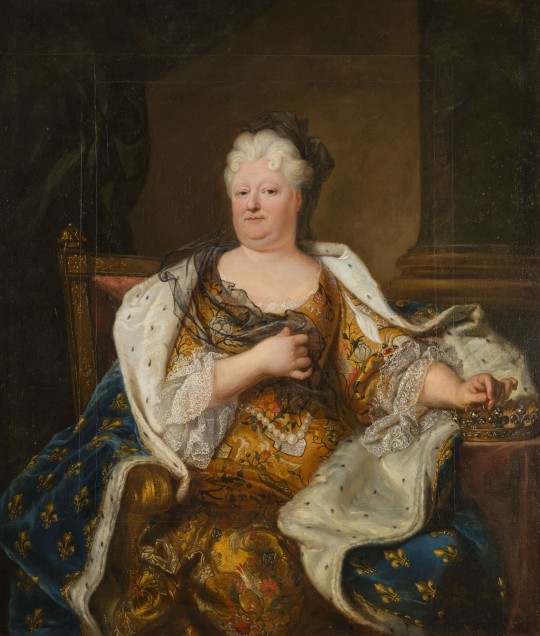
Julian Swann- Exile, inprisonment or death- The Politics of Disgrace in Bourbon France
#xvii#julian swann#exile inprisonment or death: the politics of disgrace in bourbon france#marie de médicis#anne geneviève de bourbon condé#madame de longueville#la grande mademoiselle#anne marie louise d'orléans#louis xiv#la princesse palatine#élisabeth charlotte du palatinat#madame de maintenon
18 notes
·
View notes
Photo

Marie Louise Élisabeth d'Orléans, Duchess of Berry (20 August 1695 in Palace of Versailles – 21 July 1719 in Paris), known affectionally with the moniker Joufflotte, was a member of the House of Orléans who married Charles, Duke of Berry.
5 notes
·
View notes
Photo

Louise Élisabeth d'Orléans, Queen of Spain.
#louise elisabeth d'orleans#18th century#18th century art#house of bourbon#spanish monarchy#long live the queue
154 notes
·
View notes
Photo
No DNA test required, lol




Monsieur’s pretty babies:
Marie-Louise d'Orléans, who became the Queen of Spain
Anne-Marie d'Orléans, who became the Queen of Sardinia
Philippe II, who became the next Duke of Orléans
Élisabeth-Charlotte d'Orléans, who became the Duchess of Lorraine
#philippe d'orléans#monsieur#Marie Louise d'Orléans#Anne Marie d'Orléans#Philippe II#Élisabeth Charlotte d'Orléans#philippe duc d’orleans#history#french history
105 notes
·
View notes
Text
MARIE-LOUISE-ÉLISABETH OF ORLÉANS
(born 1695 - died 1719)
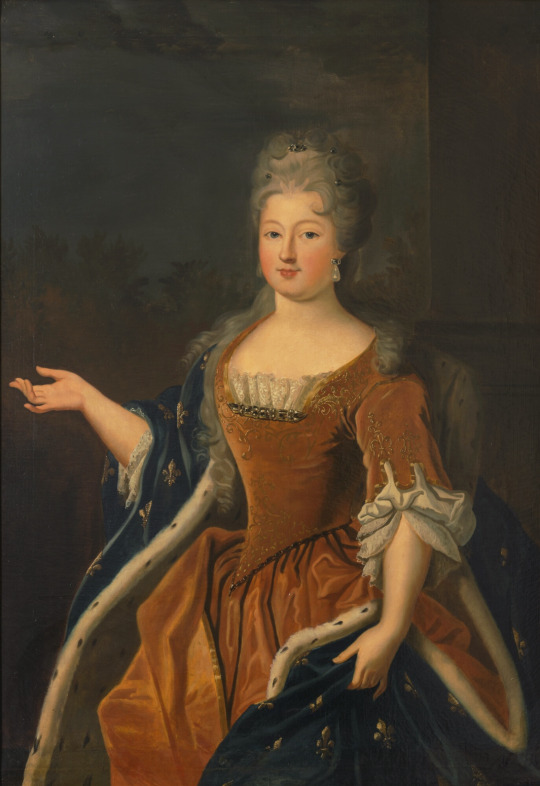
pictured above is a portrait of the Dowager Duchess of Berry, a copy by Auguste de Châtillon from 1838, after a portrait attributed to Pierre Gobert from the 18th century
-------------------- ~ -------------------- ~ --------------------
SERIES - On this day August Edition: Marie-Louise-Élisabeth was born on 20 August 1695.
-------------------- ~ -------------------- ~ --------------------
MARIE-LOUISE-ÉLISABETH was born on 20 August 1695, at the Palace of Versailles. She was the second child of Philippe II, Duke of Orléans and Françoise-Marie of Bourbon, Mademoiselle de Blois.
Having been born into the HOUSE OF ORLÉANS and as a legitimised maternal granddaughter of Louis XIV, King of France, she was a member of the French Royal Family.
As the eldest surviving daughter of the Duke of Orléans, from birth she was known as MADEMOISELLE D'ORLÉANS, having sometimes been called simply as Mademoiselle at the French Court.
When she was fourteen years old, in 1710, she was married to her cousin CHARLES, the Duke of Berry. He was the youngest son of Louis, (le Grand) Dauphin of France and Princess Maria Anna Victoria of Bavaria.
After her wedding she became the DUCHESS OF BERRY but was known at Court as MADAME DE BERRY.
Around the time of her wedding King Louis XIV also gave her husband the Duchies of Alençon and Angoulême, and the County of Ponthieu as apanages. So she also became the DUCHESS OF ALENÇON, the DUCHESS OF ANGOULÊME and the COUNTESS OF PONTHIEU.
During their four years of marriage she got pregnant three times, but none of the children survived. Her husband died in 1714, a month before she gave birth to the last children.
Her husband died aged only 27 and left her as an eighteen-year-old widow and she officially became the DOWAGER DUCHESS OF BERRY.
She received Luxembourg Palace as her Parisian residence, a place where she held many parties and receptions.
In 1715 her maternal grandfather the King Louis XIV and was succeeded by her cousin the infant King Louis XV, with her father as Regent.
At the time of her grandfather's death she was pregnant for the first time after becoming a widow, giving birth to a shortly living girl in 1716.
The people and the press often criticized her "promiscuous" life. Her contemporary the philosopher Voltaire (born François-Marie Arouet) even suggested an incestuous relationship between her and her father, the Regent. And, because of this he was imprisoned at the Bastille for 11 months.
It is said that by 1716 she married secretly to SICAIRE ANTONIN ARMAND AUGUSTE NICOLAS, the Count of Rions, and he may have been the father of her last two children. His parents were Amé Balise of Aydie, Count of Benauges and Thérèse Diane of Bautru Nogent.
As her second wedding was morganatic, she never took her husband's name and continued to be known at Court as Madame de Berry, until her own death.
Though she continued to host lavish parties and never hid any of her pregnancies. In 1717 she even received Pyotr I (the Great), Emperor of all the Russias while heavily pregnant.
All of her pregnancies made her fat and decresead her health, and she died three months after her last childbirth in 1719, aged only 23, at her home the Château de la Muette, outside Paris.
-------------------- ~ -------------------- ~ --------------------
MARIE-LOUISE-ÉLISABETH and her first husband CHARLES had three children...
Mademoiselle de Berry - died aged two days;
Charles, Duke of Alençon - died aged twenty days; and
Marie Louise Élisabeth of Alençon - died aged one day.
With her secretly second husband ARMAND AUGUSTE she may have had two children...
an unnamed daughter - a nun; and
a stillborn daughter.
And she also had illegitimate children...
With an unknown man...
an unnamed daughter - died aged three days.
#marie louise elisabeth d'orleans#duchess of berry#mademoiselle d'orleans#house of orleans#french royals#french royal family#royals#royalty#monarchy#monarchies#royal history#french history#european history#world history#history#history lover#17th century#18th century#regency#french court#versailles#louis xiv#louis xv#duke of orleans#history by laura
22 notes
·
View notes
Text









⚜️ Armor of Infante Luis (Louis I of Spain), Prince of Asturias, France (Paris), 1712
Materials: Steel, gold, brass, silk, cotton, metallic yarn, paper
🏛 The MET
🎨 Louis I - Portrait by Jean Ranc, 1724
Interesting Facts:
▪Possibly the last royal armor made in Europe, this is believed to have been presented to the five-year-old Infante Luis (1707–1724), prince of Asturias, by his great-grandfather Louis XIV of France (1638–1715).
▪The armor is signed and dated on the backplate Drouar Ordinaire du Roi aux Heaume à Paris 1712 (Drouar, armorer-in-ordinary to the king, at the sign of the helm, in Paris, 1712). The signature probably refers to Jean Drouart (died before October 1715), a royal armorer. Drouart was one of the last practicing armorers active in France by 1712.
▪Remarkable for the state of its preservation, the armor retains its lustrous blue and gold surfaces and nearly all the original red silk lining. The gilt rivet heads are of heraldic design – the lion of León, the castle of Castile, and the fleur-de-lis of France – representing the dynastic claims to which Luis was heir.
▪Part of the red silk lining of this child's armor is stuffed with a French newspaper from 1711, the year before the armor was made.
▪Louis I was the first Bourbon born in Spain
▪In 1709 Luis was recognized as heir presumptive, being named príncipe (prince) de Asturias, and succeeded to the throne on Jan. 15, 1724, upon the abdication of his father. On February 9 he was formally proclaimed king. He fell ill, however, probably of smallpox, on August 19 and died 12 days later. Philip V returned to the throne.
▪On January 20, 1722, Louis married Louise Élisabeth d'Orléans, who at that time was only 12 years old. The dowry of this marriage was an enormous 4 million livres.
- -
⚜️ Доспехи Инфанта Луиса (Людовика I, короля Испании), Принца Астурийского, Париж, 1712 г.
Материалы: Сталь, золото, латунь, шелк, хлопок, металлическая нить, бумага
🏛 The MET
🎨 Портрет Луиса I - Художник Жан Ранк (Jean Ranc) 1724
Интересные факты:
▪Вероятно, это последние королевские доспехи, изготовленные в Европе, как полагают, были подарены 5-летнему Инфанту Луису (1707-1724), принцу Астурийскому, его великим прадедом Людовиком XIV, королем Франции (1638-1715).
▪Доспехи подписаны с датировкой на задней пластине "Drouar Ordinaire du Roi aux Heaume à Paris 1712" Подпись, вероятно, принадлежит королевскому оружейнику Жану Друару (умер до октября 1715 г.), которого на 1712 г. можно считать последним оружейником и мастером доспеха во Франции.
▪Примечательно, что в броне сохранились синеные и позолоченные поверхности, а также почти вся оригинальная подкладка из красного шелка. Заклепки с геральдической символикой - лев Леона, кастильская Башня и королевская французская лилия (флёр-де-лис) - указывают на династические притязания принца.
▪Часть красной шелковой подкладки этого доспеха набита французской газетой 1711 года, изданной за год до того, как доспех был изготовлен.
▪Луис I - первый Бурбон, родившийся в Испании
▪Луис взошел на престол 15 января 1724 г. после отречения своего отца Филиппа V. 9 фев��аля он был официально провозглашен королем, а 19 августа того же года заболел, вероятно, оспой, и умер 12 дней спустя, через неделю после 17-го дня рождения. Филипп V вернулся на престол.
▪20 января 1722 года Луис женился в 14 лет на Луизе Елизавете Орлеанской, которой на тот момент было всего 12 лет. Её приданое составляло 4 млн ливров.
#medievalarmour
#armsandarmor
#museum
#armor
#knight
#musee
#chateau
#armure
#chevalier
#moyenage
#harnisch
#harness
#armatura
#medievalarmor
#king
58 notes
·
View notes
Text
wip introduction - Élisabeth: a historical fiction novel

genre || historical fiction
themes || coming of age, manipulation, power and corruption, loss of innocence, individual vs society, prejudice, judgement, love, suffering, deception.
status || planning
type || novel
wordcount goal || 100k
inspirations || based on a true story
contains these possible tw || descriptions of mental illness & eating disorders, abuse, discrimination of the mentally ill
- Summary -
Louise Elisabeth, the Spanish Marie Antoinette.
In 1721, 11 year old Louise Élisabeth d'Orléans is sent to Spain to marry the future heir, Prince Luis of Spain. Her dowry is an enormous 4 million livres, and the future of Europe rests on her shoulders.
Ignored and neglected as a child, Elisabeth is ill equipped for life at court. She is illiterate and quickly makes herself the laughing stock of the Spanish royal family, much to the embarrassment of her father, the Duke d'Orléans. She suffers from peculiar eating habits and strange moods, all which serve to further ostracize her from the Spanish people. When her father-in-law suddenly abdicates and passes the throne onto his young son, 14 year old Élisabeth is suddenly the most powerful girl in Spain. As she finally settles into her new life as Queen, tragedy strikes and her world is yet again thrown into chaos.
{if you’re interested, you can find more information about the real Louise Élisabeth here and here.}
2 notes
·
View notes
Text
Philippe I, Duc d'Orléans (Philippe de France)
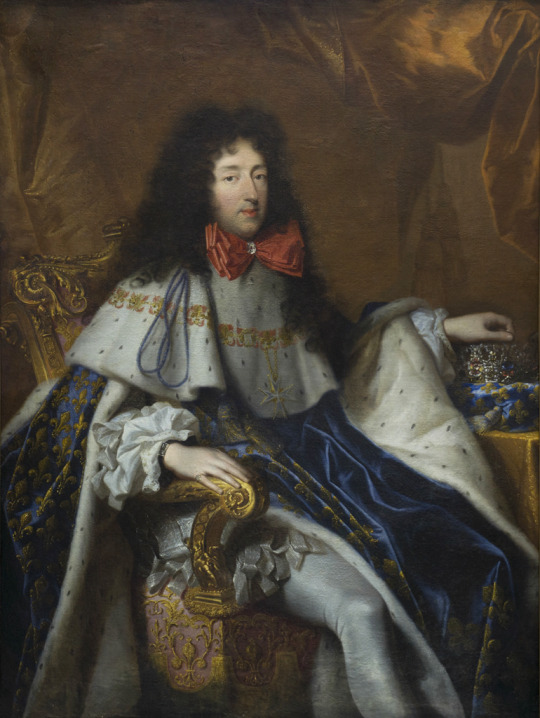
Philippe I, duc d'Orléans was born on September 21, 1640 in Château de Saint-Germain-en-Laye, France. His parents were King Louis XIII [1601-1643] and Queen Anne of Austria [1601-1666]. He had one elder brother, King Louis XIV [1638-1715].
In 1661 he married Henrietta Anne of England [1644-1670]. Together they had four [4] children: Marie Louise d'Orléans [1662-1689], Philippe Charles d'Orléans, Duc de Valois [1664-1666], stillborn daughter [July 09, 1665], and Anne Marie d'Orléans [1669-1728]. After Henrietta's death, Philippe married Princess Elisabeth Charlotte of the Palatinate [1652-1722] in 1671. Together they had three [3] children: Alexandre Louis d'Orléans, Duc de Valois [1673-1676], Philippe II, Duc d'Orléans [1674-1723] and Élisabeth Charlotte d'Orléans [1676-1744].
Philippe was styled the Duke of Anjou from birth. He became the Duc d'Orléans in 1660 after the death of his Uncle Gaston. In 1661 he also received the dukedoms of Valois and Chartres, and the lordship of Montargis. Following his victory in battle in 1671, Louis XIV gave him the dukedom of Nemours, the marquisates of Coucy and Folembray, and the countships of Dourdan and Romorantin. Upon the death of Mademoiselle in 1693, Philippe acquired the dukedoms of Montpensier, Châtellerault, Saint-Fargeau and Beaupréau. He also became the prince of Joinville, Count of Mortain, Bar-sur-Seine, and Viscount of Auge and Domfront. Philippe was also given the nickname of "the grandfather of Europe."
He was a successful military commander during the War of Devolution in 1667. In 1676 and 1677 he took part in the sieges in Flanders, and was promoted to the rank of Lieutenant General. The most impressive victory won under Philippe's command took place on April 11, 1677: the Battle of Cassel against William III, Prince of Orange.
Philippe de France died on June 09, 1701 (aged 60) in Château de Saint-Cloud, France. The cause of death was from a fatal stroke. He was laid to rest on June 21, 1701 at the Basilica of Saint-Denis, France
#french history#history#royalty#personal life#philippe i duke of orléans#philippe of france#duc d'orléans#duke of orleans#philippe I#titles#military#world history
6 notes
·
View notes